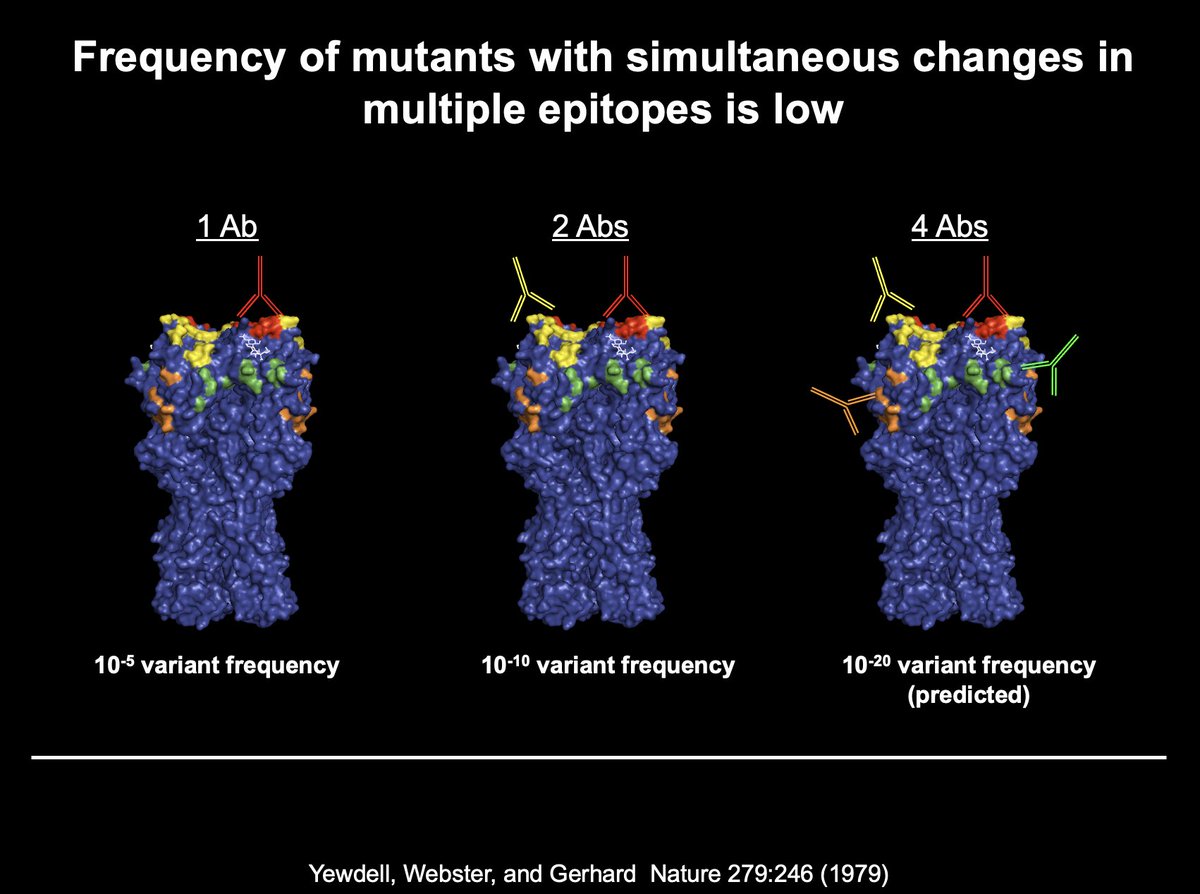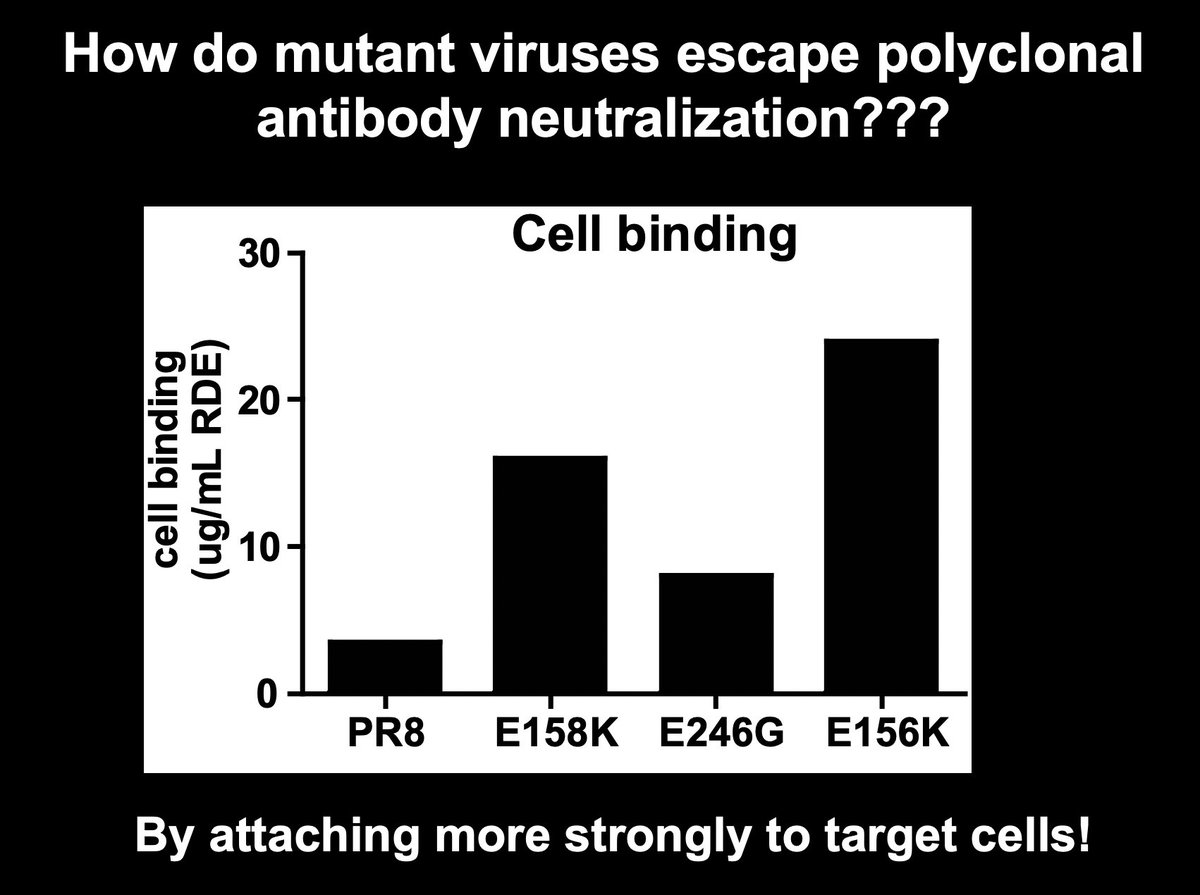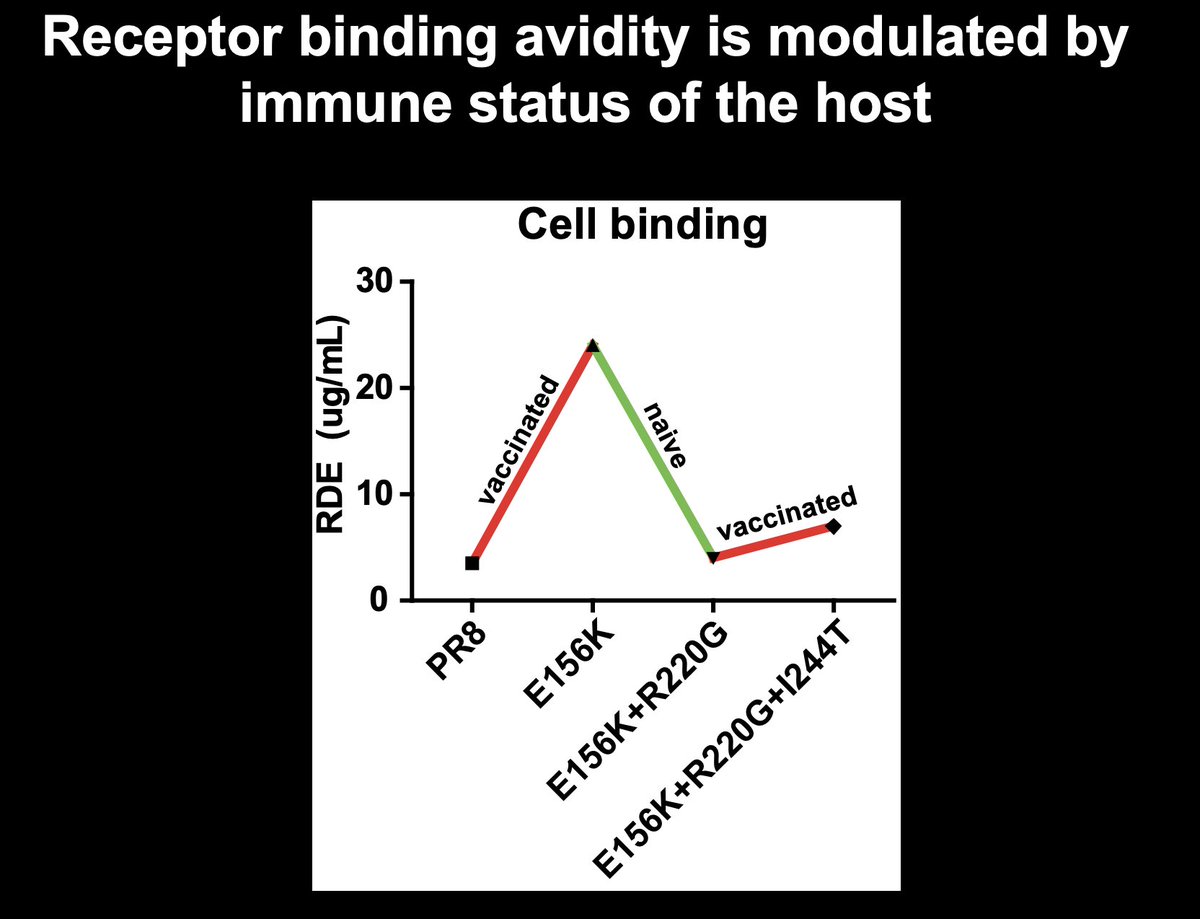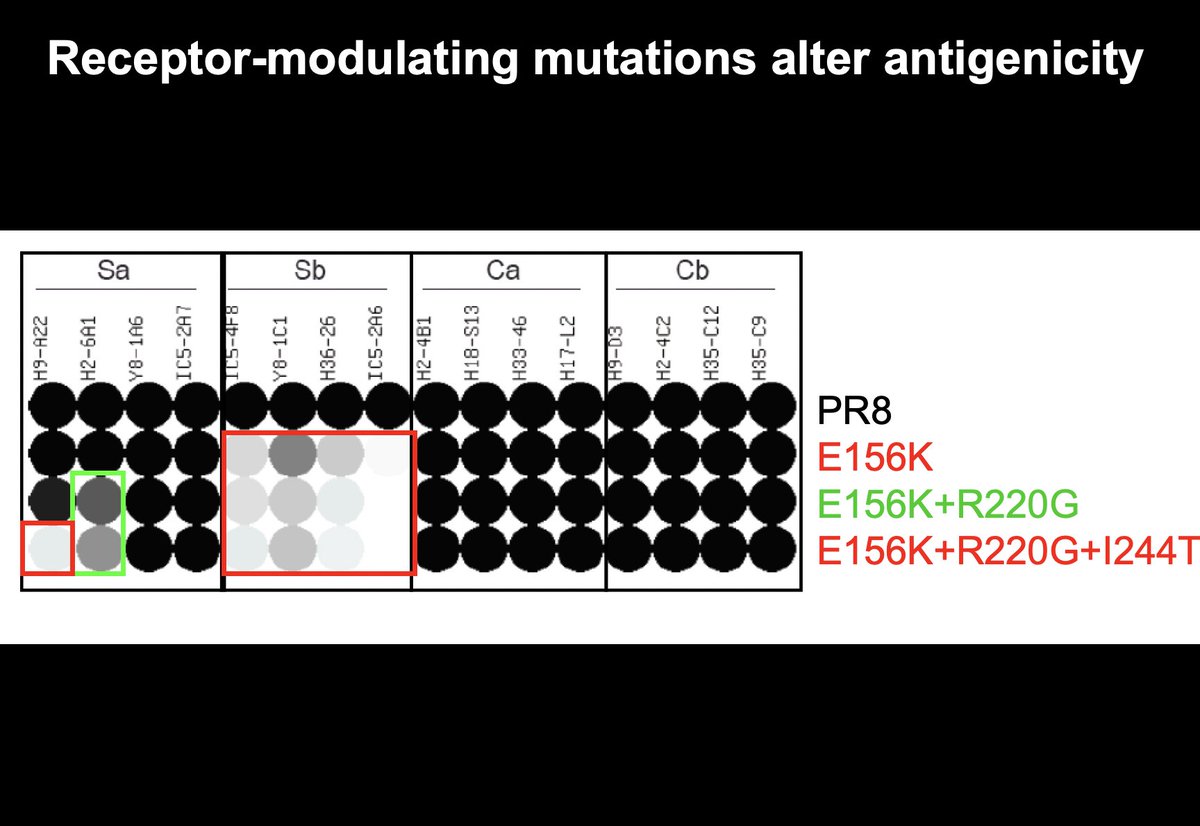There has been recent discussion of how this influenza virus mouse study that I completed as a postdoc potentially relates to current SARS-CoV-2 evolution, so I thought I would write a short thread about it. 1/
@trvrb @LauringLab https://science.sciencemag.org/content/326/5953/734
@trvrb @LauringLab https://science.sciencemag.org/content/326/5953/734
@trvrb brought this up recently and @lauringlab also tweeted on this earlier 2/ https://twitter.com/trvrb/status/1349774312937385984?s=20
Here is the story: influenza viruses do not have a high enough error rate to simultaneously acquire mutations that block all of the different types of antibodies in most polyclonal serum...that part was figured out in 1979 when I was still in diapers....3/
When confronted with polyclonal antibody pressure in mice, we found that influenza viruses acquire single substitutions that increase virus binding avidity. Viruses that bind to cells more efficiently are difficult to neutralize, regardless of antibody specificity. 4/
Importantly, we found that many 'receptor avidity' influenza substitutions simultaneously affect antibody binding. These variants likely have a fitness advantage in some immune individuals who have focused antibody responses. 5/
Here is an interesting part that I have not seen discussed on Twitter: we found that viruses with greater receptor avidity were disfavored in naive hosts. Viruses with high avidity acquired additional substitutions in naive hosts that restored binding to original levels. 6/
Some of these influenza virus substitutions that decreased receptor binding simultaneously decreased antibody binding. Viruses with low avidity are probably favored in naive host to facilitate virus release in the absence of immune pressure. 7/
So, viruses are constantly adjusting receptor binding avidity depending on the immune status of the host. High avidity viruses are favored in immune hosts and low avidity viruses are favored in naive hosts. Many of these substitutions affect antibody binding. 8/
It is unclear how this all relates to SARS-CoV-2. It is interesting that many of the substitutions in emerging SARS-CoV-2 strains appear to increase spike affinity for ACE2. Are these being selected for in response to polyclonal antibody pressure? We don't know yet. 9/
It is possible that SARS-CoV-2 variants with lower binding avidity were initially favored when population immunity was low, but that high binding avidity SARS-CoV-2 variants are now being favored as population immunity increases. 10/
We are working on these questions and will post data as soon as we generate them! 11/
This postdoc project (that I published with Jon Yewdell 11 years ago before starting my own lab) was conceived to try to understand basic mechanisms of influenza virus antigenic drift. Thank goodness for basic research. 12/end

 Read on Twitter
Read on Twitter





